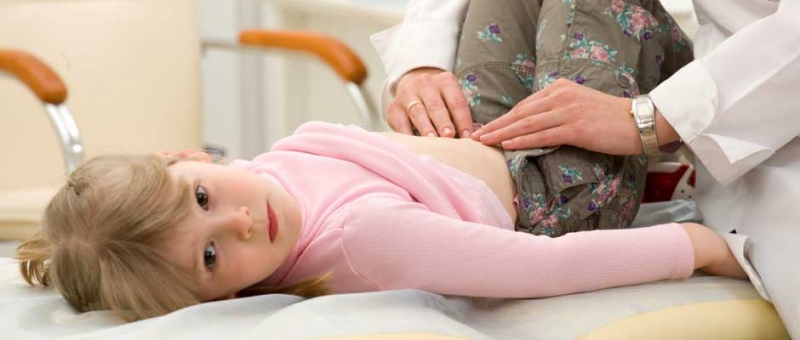Appendicitis is an infection of the appendix that mostly affects people between the ages of ten and thirty. It is treated by surgically removing the appendix. Doctors aren’t sure why we have an appendix, and people who have had their appendix removed, certainly don’t suffer any adverse effects for lack of one. Appendicitis is characterised by pain in the lower right abdomen. Appendicitis can be dangerous and an infected appendix can burst, causing the infection to spread. For this reason, it’s important that you seek treatment right away.
What causes it?
People get appendicitis when the appendix becomes infected with bacteria. These bacteria cause the appendix to fill with pus and swell. Bacteria can grow in the appendix when some sort of food or fecal matter (poo) gets stuck in the appendix. Sometimes parasites, trauma and foreign objects can block the appendix as well and cause bacteria to grow.
People who suffer reoccurring appendix pain without an enlarged appendix or elevated white blood cell count are described as having a ‘grumbling appendix’ which may, or may not, over time evolve into appendicitis.
Is it serious?
Appendicitis is very serious because, without medical treatment, the appendix will become so filled with pus it will burst. Once the infection spreads to the rest of the abdominal cavity, a life-threatening condition, called peritonitis, arises. It takes a mere 36 hours from the time symptoms begin for the appendix to reach bursting point.
Can I prevent it?
While many causes of appendicitis cannot be controlled (eg. trauma, calcified deposits) the one way you can protect your children against appendicitis is by encouraging your kids to eat their veggies. When food moves slowly through the intestines, build-ups can cause blockages in the appendix. Diets high in fibre – like fruits, vegetables, and whole grains – help food move through the intestines and prevent blockages and help keep the appendix healthy.
How do I know if my child has appendicitis?
Appendicitis can be hard to diagnose. It may start with pain around the belly button which then moves to settle in the lower right abdomen. Your child might experience other symptoms such as:
The pain tends to get aggresively worse, and movement aggravates the pain. If the appendix is not removed and subsequently bursts, your child will experience a sudden worsening of pain which may result in collapse.
How do I treat appendicitis?
Appendicitis is treated by removing the appendix in an operation called an appendectomy, antibiotics are rarely used for a cure. If the appendix has already burst, the surgeon will insert a drainage tube into the abdomen to drain the pus from the abdominal cavity to prevent peritonitis, an infection of the lining of the abdominal cavity. The patients full return to physical activity is variable depending on the person, but this usually takes several weeks.
When should I call the doctor?
If you suspect your child has appendicitis, call your doctor immediately. You may have to go to the hospital if you can’t contact your doctor immediately – appendicitis is not a wait-and-see condition. Your child will need to be treated right away to prevent a life-threatening infection.
What you need to know:
- Appendicitis is an infection of the appendix caused by bacteria.
- The infection can make the appendix swell and burst.
- If the appendix bursts, it can create a life-threatening infection called peritonitis.
- Appendicitis is treated by surgically removing the appendix.







Leave A Comment
You must be logged in to post a comment.